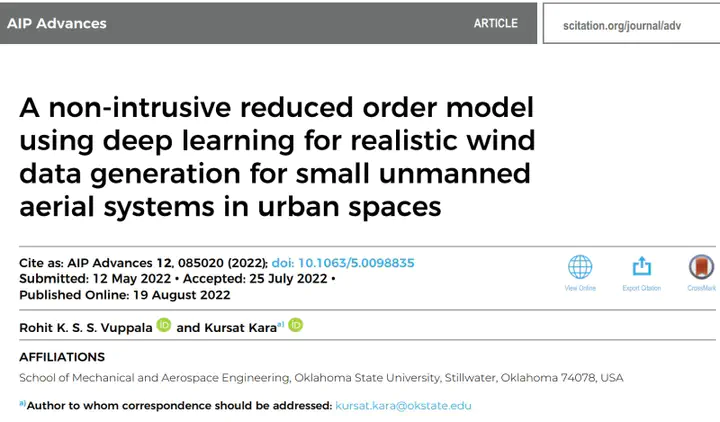A non-intrusive reduced order model using deep learning for realistic wind data generation for small unmanned aerial systems in urban spaces

Abstract
Realistic wind data are essential in developing, testing, and ensuring the safety of small unmanned aerial systems in operation. We present a non-intrusive reduced order modeling (NIROM) approach to replicate realistic wind data and predict wind fields. The method uses a LES model to generate high-fidelity data. To create a reduced-order model, we use proper orthogonal decomposition to extract modes from the three-dimensional space and use specialized recurrent neural networks and long short-term memory to step in time. This paper combines the traditional approach of using computational fluid dynamic simulations to generate wind data with deep learning and reduced-order modeling techniques to devise a methodology for a non-intrusive data-based model for wind field prediction. A model of an urban subspace with a building setup in neutral atmospheric conditions is tested to demonstrate the method.